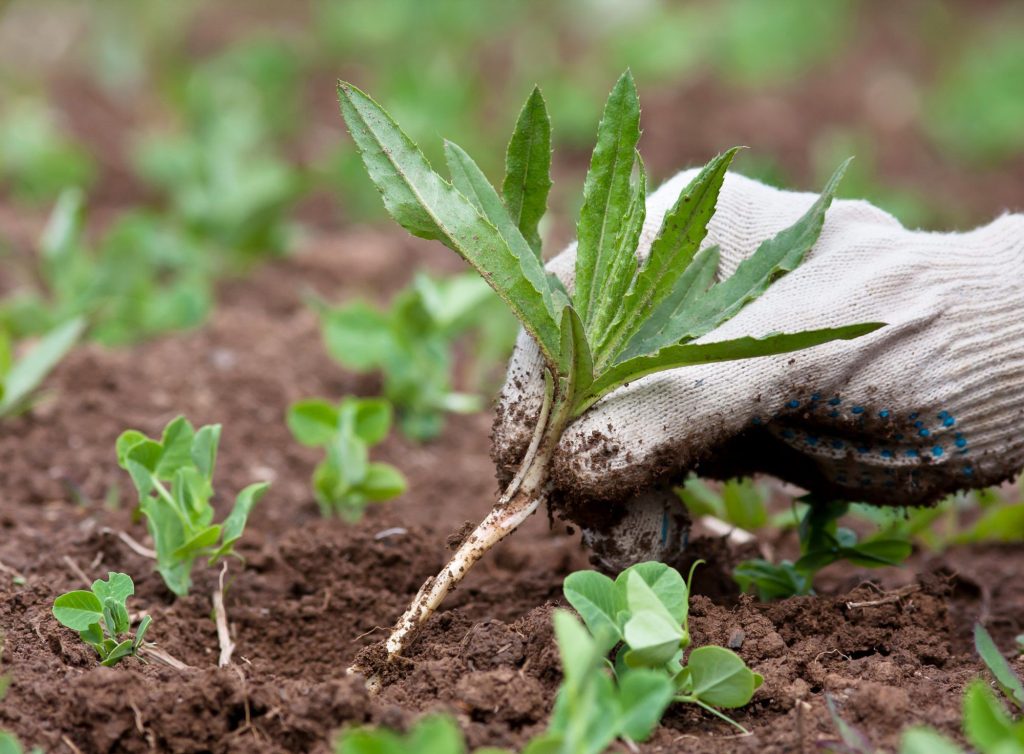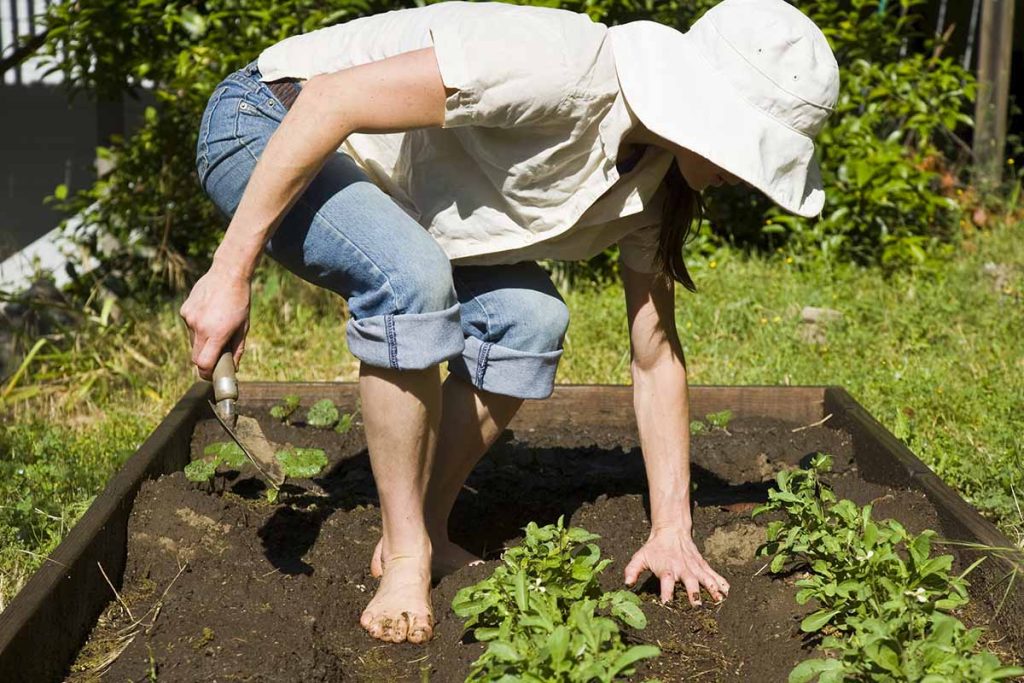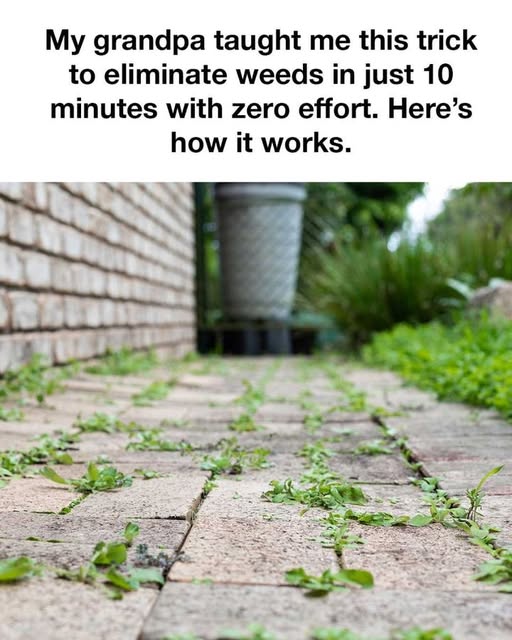Gardening has always been a cherished tradition in my family. From vibrant flowers to lush vegetable patches, our garden has been a source of pride and joy for generations. However, like many gardeners, we’ve faced the persistent problem of weeds. They’re the uninvited guests that rob our plants of nutrients, sunlight, and space. But my grandpa had a trick up his sleeve to tackle this issue with astonishing ease. Here’s how his simple yet effective method can help you eliminate weeds in just 10 minutes with zero effort.
Understanding the Weed Problem
Weeds are not just unsightly; they compete with your plants for essential resources like water, nutrients, and light. Left unchecked, they can overwhelm your garden, making it difficult for your desired plants to thrive. Traditional methods of weed removal, such as hand-pulling or using chemical herbicides, can be time-consuming, labor-intensive, and potentially harmful to the environment.

The Magic Ingredient: White Vinegar
My grandpa’s secret weapon against weeds is something you probably already have in your kitchen: white vinegar. This common household item is a natural herbicide that can effectively kill weeds without harming the soil or surrounding plants when used correctly. Here’s why it works:
- Acetic Acid: White vinegar contains acetic acid, which can dehydrate and kill the weed upon contact.
- Non-Selective: It’s a non-selective herbicide, meaning it can kill most plants it comes into contact with. Therefore, it must be applied carefully.
- Eco-Friendly: Unlike chemical herbicides, vinegar is environmentally friendly and breaks down quickly, posing no long-term risks to your garden.
The Step-by-Step Process
What You’ll Need:
- White vinegar (5-20% acetic acid concentration)
- A spray bottle or garden sprayer
- Dish soap (optional, for added effectiveness)
- Protective gloves and eyewear (for safety)
Step 1: Prepare the Solution
Fill your spray bottle or garden sprayer with white vinegar. For tougher weeds, you can use vinegar with a higher acetic acid concentration (up to 20%). Adding a few drops of dish soap can help the solution adhere better to the weed’s leaves, enhancing its effectiveness.
Step 2: Apply to Weeds
On a sunny day, spray the vinegar solution directly onto the leaves of the weeds, ensuring thorough coverage. Be cautious to avoid spraying desirable plants, as vinegar can harm them as well.
Step 3: Observe the Results
Within a few hours, you should notice the weeds wilting and turning brown. The acetic acid in the vinegar works by drawing moisture out of the plant, effectively dehydrating and killing it. Repeat the process as necessary for stubborn weeds.
Safety Precautions
While vinegar is a natural and eco-friendly solution, it’s essential to take certain precautions:
- Wear protective gloves and eyewear to prevent irritation from splashes.
- Apply the solution on calm, sunny days to prevent drift onto desirable plants.
- Store vinegar and the prepared solution out of reach of children and pets.

Embracing Natural Solutions
Discovering my grandpa’s simple yet effective method for weed control has been a game-changer in my gardening routine. Not only does it save time and effort, but it also aligns with my commitment to environmentally friendly practices. By using white vinegar, I can maintain a beautiful, healthy garden without relying on harsh chemicals. I encourage fellow gardeners to give this natural weed killer a try. It’s a testament to the wisdom passed down through generations and a reminder that sometimes, the simplest solutions are the most effective.
Conclusion
Trying out my grandpa’s vinegar weed-killing trick has completely changed the way I care for my garden. It’s fast, easy, affordable, and—best of all—natural. I no longer spend hours pulling weeds or worry about harmful chemicals affecting my plants, pets, or the environment. Every time I use this simple method, I’m reminded of how smart and resourceful he was, and how sometimes the best solutions are right in front of us, hidden in plain sight. If you’re tired of battling weeds and want a safer, easier alternative, I truly recommend giving this vinegar solution a try. You might be surprised by how well it works—and how satisfying it feels to embrace an old-school, time-tested trick that really gets the job done. Happy gardening! 🌿

















